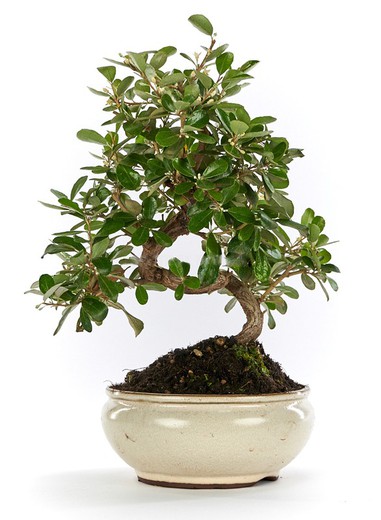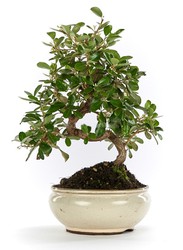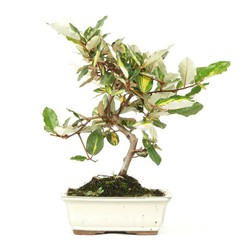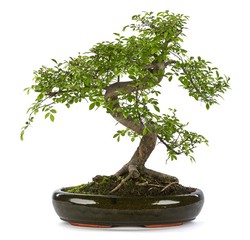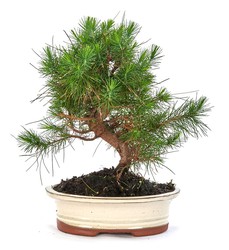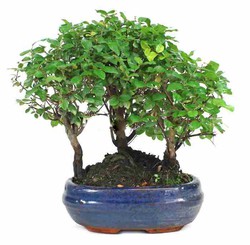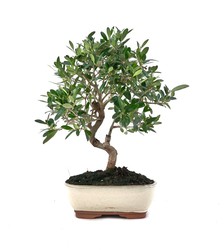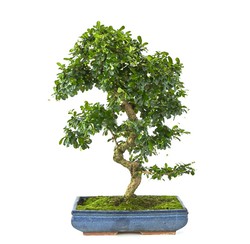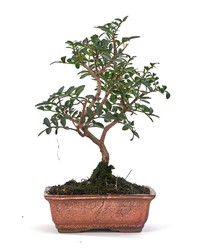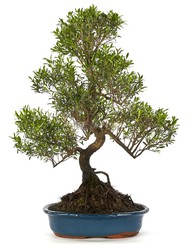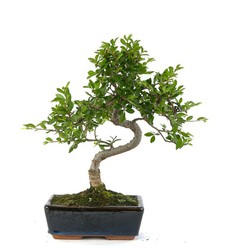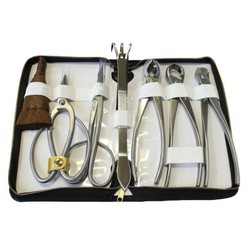Bonsai Elaeagnus pungens
Brand: Brycus-Bonsáis
Description
The eleagnus pungens is an evergreen shrub that in normal situations can grow up to 4-5 meters. It is a very resistant species, capable of surviving both in temperate zones and in those in which winter can reach -20 degrees. It is characterized by its aromatic flowering in late autumn, which then materializes in profuse reddish berry-shaped fruiting.
Details
Eleagnus pungens care
Eleagnus pungens are trees with a great capacity for adaptation, since apart from being able to withstand a great variety of temperatures, they can grow both in very sunny and shady orientations. In addition, it is not very demanding in terms of soil PH, being able to grow well in both alkaline and acidic soils. In addition to all this, it tolerates droughts quite well, so it can be said that it is a highly recommended species for those who are starting in the world of bonsai.
Watering the eleagnus
As a general rule, we will water the bonsai when the surface part of the substrate begins to dry out. We must take into account the season of the year in which we are, so watering can be daily during the summer and every 3-4 days in winter.
We will take special care during the flowering and fruiting periods, since if we do not provide the adequate amount of water, we run the risk of losing part of the flowering.
Eleagne orientation
As we have already mentioned previously, eleagnus can grow both in full sun exposure, and in half shade.
However, it is advisable to place the bonsai in a location as sunny as possible, since the tree will grow more vigorously. In addition, with more light, the leaf will sprout smaller and smaller, which is desirable from the point of view of bonsai aesthetics.
Eleagnus subscriber
We will fertilize the eleagnus like any other bonsai, that is, during the entire vegetative growth stage.
It is advisable to use a prolonged-release organic fertilizer, since this way we avoid the risk of overfertilizing the tree.
We can use chemical fertilizers in irrigation during the fattening phases of the tree, but not in the refining ones. Otherwise we will get excessive vigor and too large leaves.
Eleagnus transplant
It is recommended to transplant the eleagnus in late winter, just as the buds begin to swell.
Some masters defoliate the eleagnus during transplantation, in this way a more controlled sprouting is achieved, with smaller leaves. However, this is only recommended in vigorous specimens, since we cannot run the risk of weakening the plant.
We will use a draining substrate, since the eleagnus do not tolerate excessive humidity too well. As for the mixture it will depend on our climate, but as a general rule you can use akadama at 100% or akadama and kiryu at 70-30
Wiring and pruning of the eleagnus
The eleagnus have a fairly vigorous and vertical growth, so that to achieve a flat crown we must wire when the shoots are still tender. Otherwise we run the risk of breaking the branches, since as they mature, the bark becomes increasingly hard and brittle.
We will do the pruning during the vegetative stop stages. Keep in mind that eleagnus bloom in November, so if we want our tree to bloom profusely, we will avoid autumn pruning.
* Observations: The shape and measurements of the bonsai are approximate. The color and shape of the pot may vary from the one in the photo. Remember that a bonsai is a living being, that is why the images that appear are representative.
Comments
Questions
Best price
Find more products in
Our customers trust us

